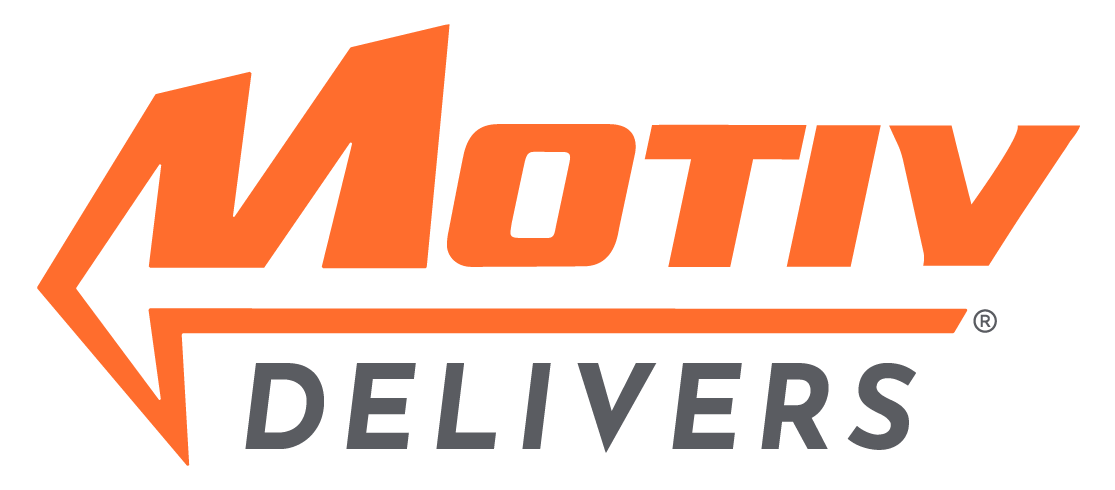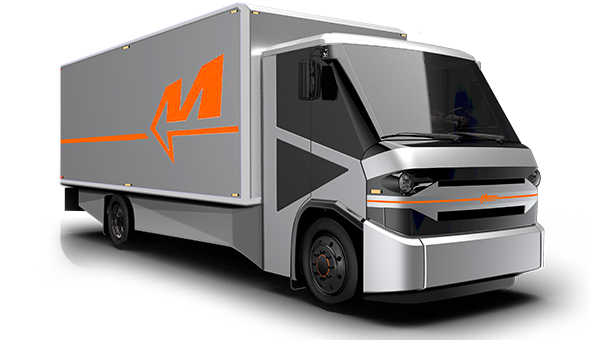The Fundamentals of Electric Vehicle Fleet Charging Technology
As fleets evaluate electrification, charging stations are a new concept for many managers. Understanding electric vehicle (EV) fleet charging technology is a crucial step in implementing a successful program.
While EV infrastructure may sound daunting at first, fleet electrification presents many benefits to your operations, namely, reduced fuel costs and maintenance over a fleet’s lifecycle. Below you’ll find essential information to help you get started on EV charging stations, electricity requirements, and how Motiv Power Systems can offer advice and support.
Charging Station/Electric Vehicle Supply Equipment (EVSE)
Used interchangeably, charging stations or EVSE (see images below) refers to all of the equipment needed to deliver electrical power from a facility’s electrical service to an EV. A charge station includes a charging interface, charging cable, and connector to your vehicle’s charge port.
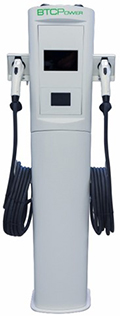
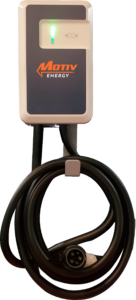
Examples of Level 2 charging stations
An EVSE connector interface has multiple options depending on charging levels, most commonly Level 2 or 3. A Level 2 charging station will have a J1772 connector interface (also known as the J-plug), while a Level 3 charging station can have either a CHadEMO or CCS connector (see below). The J1772 safety standard defines how an EVSE connects to, communicates with, and ultimately charges an EV. All EVSE connectors, including the Level 3 Fast Charging DC connectors, have been standardized by global automotive organizations across many countries.
For Level 2 charging, Motiv’s onboard charger accepts up to 19.2 kW of input power from a charge station. For a Level 3 (DC Fast) charging station, Motiv-powered vehicles use a CCS1 combo connector and can accept up to 80 kW.
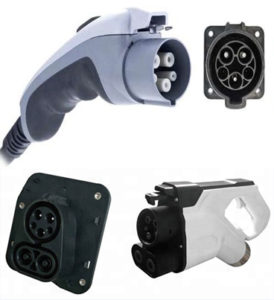
Both options provide “electric fuel” to your vehicles. However, Level 3 charging stations deliver Direct Current (DC) straight to the vehicle’s battery pack and bypass the onboard charger. While Level 2 charging stations transfer AC power to an onboard charger, which then converts AC current to DC for the battery pack.
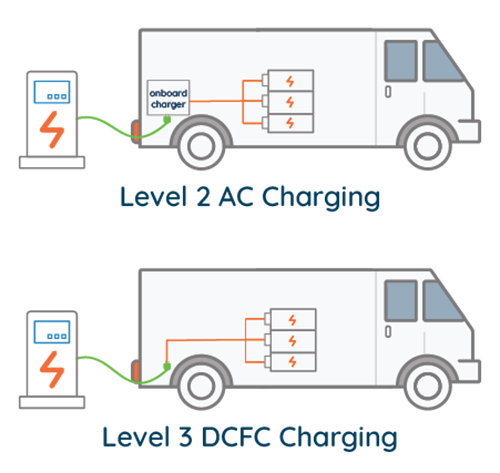
Kilowatt (kW) ratings are shown for charging stations and furnishes a measurement of power associated with the equipment. For charging stations, a higher kW rating means lower charging times for your fleet vehicles (see the guide below). For class 4 – 6 vehicles, Level 1 charging isn’t considered a viable option because of the small amount of current and slower charging times.
As a trusted fleet partner, Motiv assesses power needs and charging station requirements for fleet depots. This analysis starts by evaluating available power against expected demand, while also providing a design, review and necessary construction plans. Additionally, Motiv finds and procures commercial electricians, utility rebates, pull permits to help evaluate the right charging station for your application. This ensures right-sizing for current needs with a scalable approach towards the future.
For example, a fleet that runs their route once a day and returns to depot to charge overnight, Level 2 charging (see below) would be an ideal fit — example: linen and parcel delivery, service providers, school buses and university campus shuttles. If your fleet operates 24/7, Level 3 charging would be a better option — example: airport shuttles.

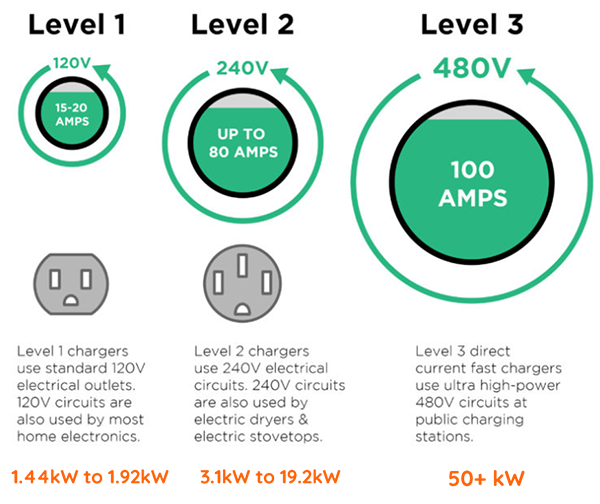
EVSE Safety
While EV fleet applications are relatively new, electrical safety has been demonstrated for over 100 years on factory floors. Charging stations and their installation are regulated by the National Electrical Code and the stations themselves meet safety standards from Underwriters Laboratory (UL) and have Ingress Protection (IP) ratings. The charging connector interface communicates between a vehicle and a charge station to ensure the correct electrical current flow based on what the charge station can deliver and what the onboard charger can receive. The charging station also prevents the charging cord from being energized when the vehicle is not plugged in or other faults exist.
Reduced Fuel Costs
Advanced EV fleet charging technology presents opportunities to decrease fuel costs while also meeting sustainability goals or state emission regulations. Smart charging stations or network stations have wireless access and provide fleets with real-time charging data and reporting. These smart stations allow fleet operators to make decisions based on low-electricity pricing (time-of-use rates) and allows companies to schedule charging sessions. Plus, large-fleet operators can take advantage of power sharing options to avoid excessive peak demand pricing from power utilities. A simple way to look at smart charging is knowing the state of charge (SOC) for each vehicle plugged in at each location, the feeder capacity, and then distributing the total feeder power across all the vehicles to ensure they all reach SOC at the same or desired time (if they are staggered).
Incentives
Besides lower electric fuel costs compared to gas- and diesel-powered vehicles, many states, municipalities, and utilities are providing purchase incentives for charging stations, along with some discounts on installation. For example, the city of Pasadena in California offered a $3,000 rebate for the installation of a smart, Level 2 (240V) charging station for commercial, workplace, multi-unit dwelling (MUD), and fleet customers in 2018.
Motiv has staff dedicated to helping you find and apply for funding, for both vehicle and charging infrastructure. We have helped our customers receive over $18M dollars in funding.
For more information on Motiv Powers Systems fleet applications, visit our success stories page. Interested to learn more, schedule a demo today.
